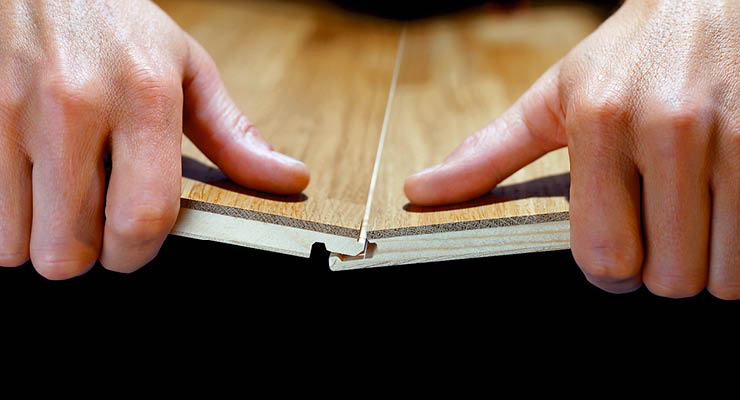Click-lock flooring features a locking mechanism that allows for easy, adhesive-free installation by simply clicking the planks or tiles together. On the other hand, glue-down vinyl flooring requires adhesive to be applied to the subfloor before installing each plank or tile. Click-lock flooring offers easier installation and can be a DIY-friendly option, while glue-down flooring provides excellent stability and durability once installed.
Click-Lock Vinyl Flooring
Click-lock vinyl flooring, also known as floating vinyl flooring, features a locking mechanism on the edges of each plank or tile. This mechanism allows the pieces to snap together seamlessly during installation, eliminating the need for adhesive. The installation process is relatively straightforward and suitable for DIY enthusiasts, as it involves simply clicking the pieces into place. Click-lock vinyl flooring is available in a wide range of styles, colors, and patterns, mimicking the look of natural materials like hardwood, stone, or tile.

Exploring Glue-Down Vinyl Flooring
Glue-down vinyl flooring requires adhesive to be applied to the subfloor before installing each plank or tile. This method creates a permanent bond between the flooring and the subfloor, offering enhanced stability and durability. Glue-down vinyl flooring is particularly suitable for high-traffic areas and commercial spaces where stability is crucial. While the installation process may be more complex than click-lock flooring and often requires professional assistance, glue-down vinyl offers a seamless finish and long-term performance.
Comparing Click-Lock and Glue-Down Vinyl Flooring
When deciding between click-lock and glue-down vinyl flooring, several factors need to be considered
Installation Process
Click-Lock Flooring: Click-lock vinyl flooring is designed for easy installation, making it an attractive option for DIY enthusiasts. The planks or tiles feature a locking mechanism that allows them to snap together seamlessly without the need for adhesive. This simplifies the installation process and eliminates the mess and hassle associated with applying glue.
Glue-Down Flooring: In contrast, glue-down vinyl flooring requires adhesive to be applied to the subfloor before installing each plank or tile. While this method creates a strong bond between the flooring and the subfloor, it may be more complex and time-consuming, often requiring professional assistance for proper installation.
Stability and Durability
Click-Lock Flooring: Click-lock flooring provides satisfactory stability and durability for most residential applications. However, in areas with significant foot traffic or heavy loads, there may be some minor movement or shifting over time, especially if the subfloor is not perfectly level.
Glue-Down Flooring: Glue-down vinyl flooring offers superior stability and resistance to movement due to its direct adherence to the subfloor. This makes it an excellent choice for high-traffic areas such as commercial spaces, where stability and durability are paramount.
Maintenance Requirements
Click-Lock Flooring: Both click-lock and glue-down vinyl flooring are relatively easy to maintain. Regular sweeping or vacuuming to remove dirt and debris, combined with occasional mopping using a mild detergent, is usually sufficient to keep click-lock flooring clean and well-maintained.
Glue-Down Flooring: Glue-down vinyl flooring may require slightly less maintenance over time due to its secure installation. Because there are no gaps or seams between the flooring and the subfloor, there is less risk of dirt or moisture penetrating beneath the surface, reducing the likelihood of damage or staining.
Aesthetics and Design Options
Click-Lock Flooring: Both click-lock and glue-down vinyl flooring offer a wide range of styles, colors, and patterns to suit any design preference. Click-lock flooring can mimic the look of natural materials such as hardwood, stone, or tile, providing endless design possibilities to enhance the aesthetic appeal of any space.
Glue-Down Flooring: Similarly, glue-down vinyl flooring offers a diverse selection of design options, allowing you to achieve the desired look and feel for your space. Whether you prefer a traditional wood look or a modern tile design, glue-down flooring can accommodate a variety of aesthetic preferences.
Initial Cost
Click-Lock Flooring: Click-lock vinyl flooring typically has a lower initial cost compared to glue-down flooring. Click-lock flooring may be more prone to movement or shifting over time, potentially leading to repairs or replacements. The absence of adhesive and the ease of installation make click-lock flooring a cost-effective option, especially for DIY projects. Additionally, because click-lock flooring can be installed without professional assistance, homeowners can save on labor costs.
Glue-Down Flooring: Glue-down vinyl flooring may have a higher initial cost due to the need for adhesive and potentially professional installation services. The cost of adhesive can vary depending on the quality and quantity required for the project. Hiring professionals for installation adds to the upfront expenses but ensures proper adhesion and a seamless finish
Read More
Steps to remove old vinyl flooring before installation?
Pros And Cons Of Sheet Vinyl Flooring
Vinyl flooring over plywood subfloor
Best adhesive for vinyl flooring on wood, concrete and walls





